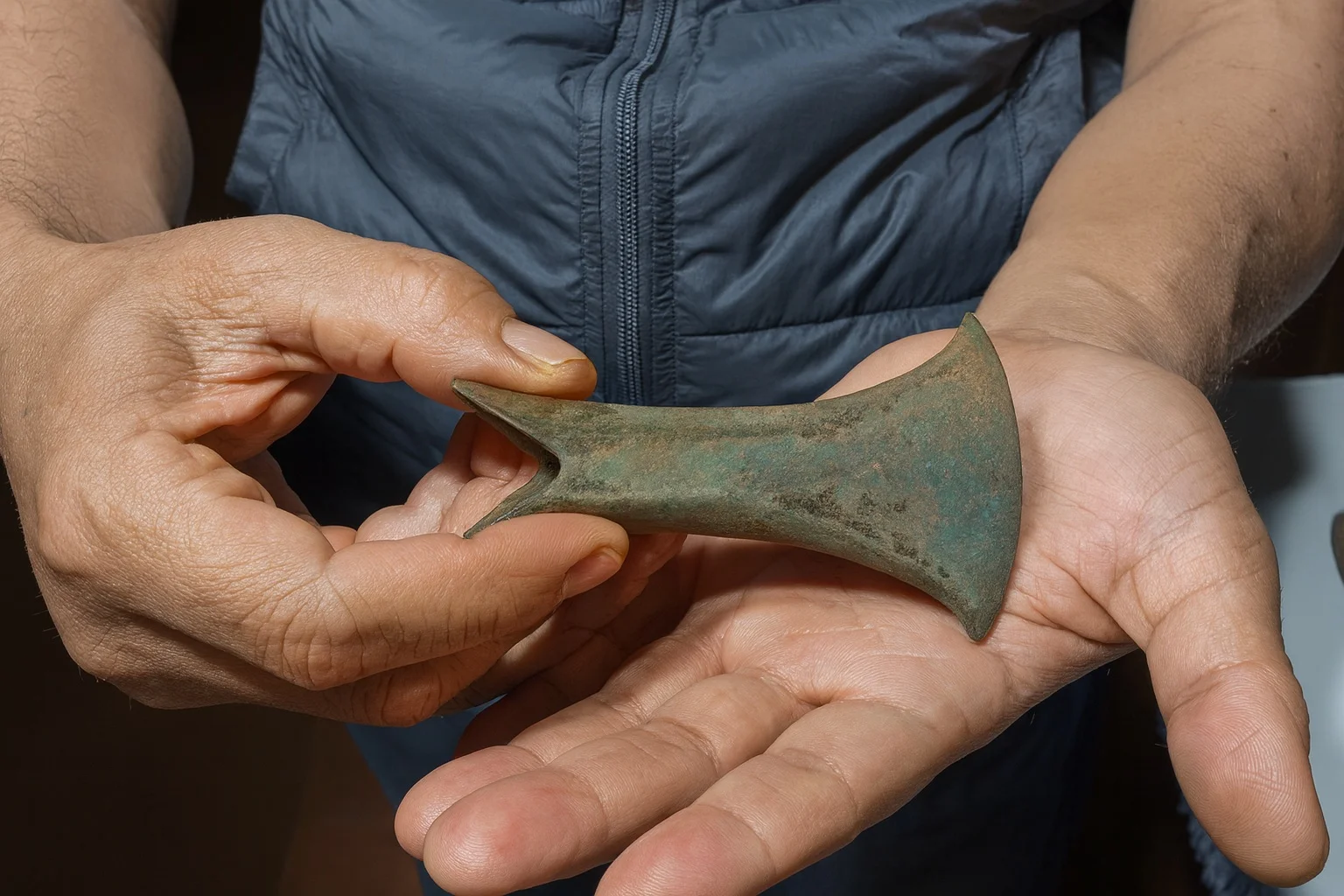A rare funnel-shaped axe discovered in Borneo could have origins in outer space according to experts.
The discovery was made near Paau Village in the island’s northern territory of Kalimantan while a local villager was panning for gold. The village is an extremely remote settlement in the Riam Kanan Reservoir and is only accessible via a two-hour boat ride.
Over the years, objects such as ancient beads and stone tools associated with groups of the Dayak people have been discovered in the vicinity of the village.
Archaeologists suggest that the axe is the first example of its kind found in Kalimantan and could reshape the region’s archaeological record.
In Javanese tradition, funnel axes (known as Gigi Petir or Untu Gledek) generally served a symbolic and social role connected in local mythology, said to appear where lightning struck.
“They are small, carefully crafted, and valued more as prestige objects or instruments of exchange,” said a spokesperson from the Banjar Regency TACB (Cultural Heritage Expert Team).
Ida Bagus Putu Prajna Yogi, an archaeologist who inspected the axe said: “In all my archaeological research in Kalimantan, this is the first time I’ve encountered a funnel axe in the region.”
Experts suggest that funnel axes are linked to sophisticated bronze-casting techniques and may even have originated from meteoritic material. Ongoing research aims to clarify their origins and cultural context – findings that could reshape our understanding of how Kalimantan societies transitioned beyond the Stone Age into early metallurgy.
The discovery is now under review by both TACB and the National Research and Innovation Agency (BRIN).
Header Image Credit : Banjar Regency Cultural Heritage
Sources : Banjar Regency Cultural Heritage





